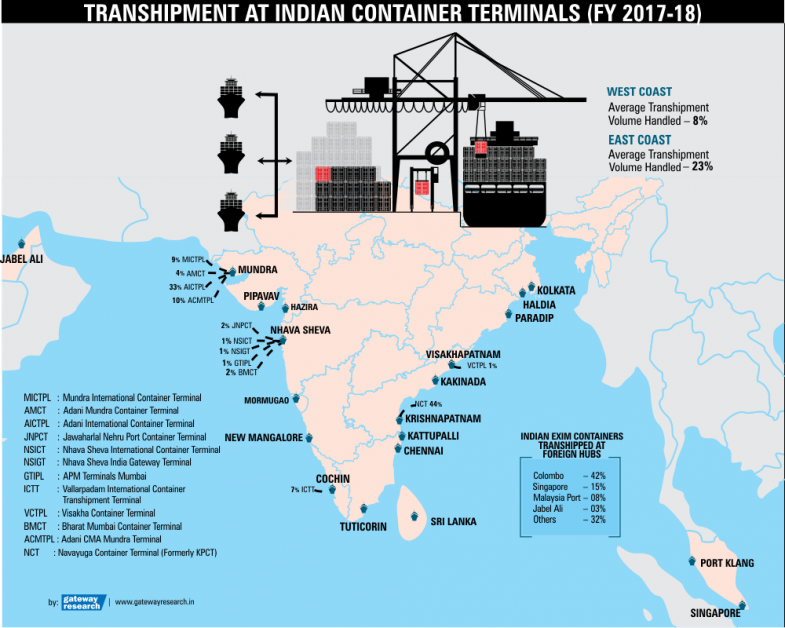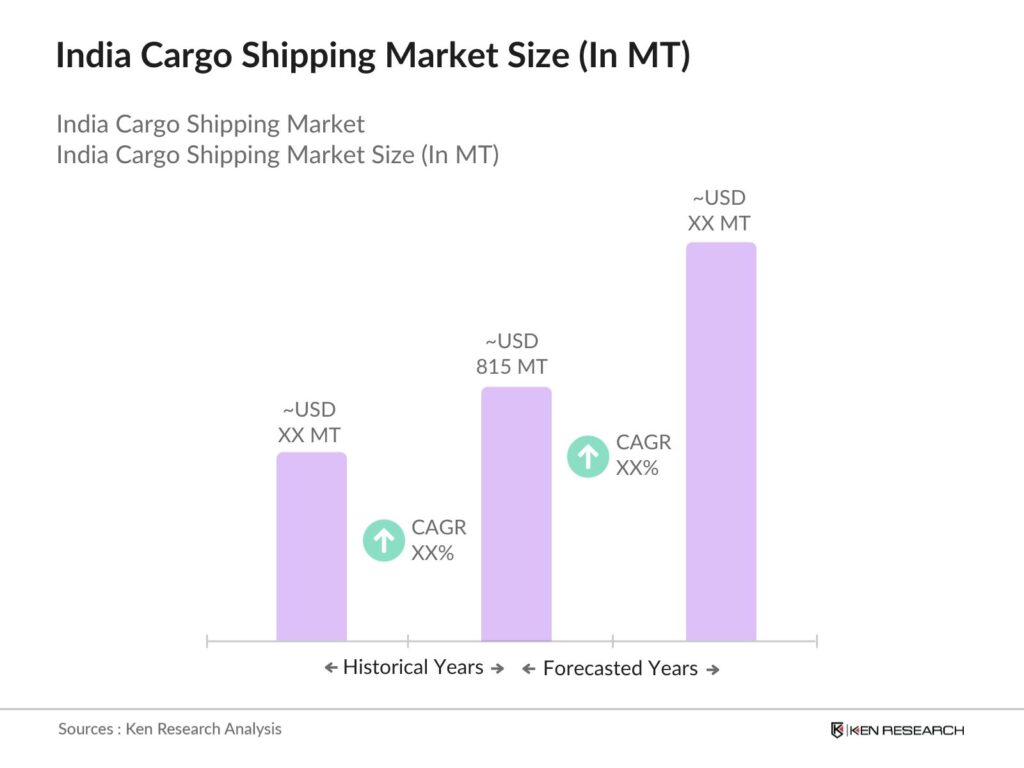
Centre Notifies Carriage of Goods by Sea Act, 2025: If you’re in the business of shipping goods across oceans, you’ll want to pay attention—because the Carriage of Goods by Sea Act, 2025 is here, and it’s shaking up how India moves cargo to and from the world. The law, officially notified by the Indian government on August 9, 2025, replaces the Indian Carriage of Goods by Sea Act, 1925. This isn’t just a minor legal update. It’s a wholesale modernization that aligns India’s maritime trade rules with global shipping standards like the Hague Rules of 1924 and the Visby Protocol of 1968/79. For maritime traders, it means clearer rules, tighter timelines, and fewer legal grey areas.
Centre Notifies Carriage of Goods by Sea Act, 2025
The Carriage of Goods by Sea Act, 2025 is India’s leap into a new era of maritime trade law. By replacing an outdated 1925 framework with globally recognized standards, it removes uncertainty, streamlines claims, and strengthens India’s position in global shipping. For anyone moving goods by sea—from small exporters to global carriers—the message is simple: learn the new rules, upgrade your processes, and set sail with confidence.
| Aspect | Details |
|---|---|
| Official Notification Date | August 9, 2025 |
| Replaces | Indian Carriage of Goods by Sea Act, 1925 |
| International Alignment | Hague Rules (1924) + Visby Protocol (1968/79) |
| Carrier Liability Limit | 666.67 SDRs per package OR 2 SDRs per kg, whichever is greater |
| Claims Deadline | Notify within 3 days; file suit within 1 year (extendable by 3 months) |
| Key Change for Traders | Bills of Lading must clearly list cargo details under the new Act |
| Official Resource | Government of India Gazette |
Why the Law Was Long Overdue?
The 1925 Act was born in a world where cargo traveled in burlap sacks and wooden crates, ports relied on paper ledgers, and steamships ruled the seas. It was based on colonial-era thinking, focusing on the needs of the early 20th-century British Empire.
Over the decades, global shipping transformed—containerization, electronic documentation, mega-ports, advanced logistics tracking—but India’s law remained stuck in the past. Other major trading nations moved on:
- The United States passed its Carriage of Goods by Sea Act (1936).
- The UK implemented the Hague-Visby Rules in 1971.
- Many European and Asian nations adopted newer frameworks like the Hamburg Rules (1978) or the Rotterdam Rules (2009).
India’s outdated law often clashed with modern shipping contracts, creating confusion and legal disputes. This new Act fixes that, ensuring India’s trade rules speak the same language as its partners.

The Big Changes — Explained
1. Out with the Old, In with the New
The 2025 Act repeals the 1925 law entirely, removing outdated provisions and replacing them with a modern, internationally recognized framework.
“This reform will streamline disputes and make India a more attractive hub for maritime trade,” says Rajiv Kapoor, maritime law expert.
2. Stronger Carrier Responsibilities
Carriers—the companies transporting goods—now face stricter, clearer obligations:
- Due diligence to ensure vessels are seaworthy, properly crewed, and equipped.
- Cargo details in the Bill of Lading must be precise—weight, quantity, description, and condition.
- Any clause in a contract that tries to cut liability below the statutory minimum is automatically void.
3. Clear Timelines for Claims
One of the biggest frustrations under the old system was uncertainty around claims. Now:
- Visible damage must be reported before or during unloading.
- Hidden damage must be reported within 3 days.
- Lawsuits must be filed within 1 year from delivery (or expected delivery), with a possible 3-month extension if the court agrees.
4. Standardized Liability Limits
The Act pegs liability to Special Drawing Rights (SDRs)—an international reserve asset defined by the IMF.
- 666.67 SDRs per package, or
- 2 SDRs per kilogram of cargo, whichever is higher.
As of August 2025, 1 SDR ≈ $1.33 USD. This makes compensation consistent and predictable for both domestic and international shippers.

5. Traditional Exceptions Remain
Carriers are still protected against claims in certain situations:
- Perils of the sea, storms, and natural disasters.
- Acts of war or piracy.
- Strikes and labor unrest.
- Latent ship defects not discoverable with reasonable care.
- Fault or negligence by the shipper.
6. India-Specific Provisions
The Act includes special clauses for:
- Sailing ships and certain regional trade routes (such as between India and Sri Lanka).
- Bulk cargo, where certified weights might not automatically bind the carrier.
How This Compares Globally?
In the United States, COGSA 1936 caps liability at $500 per package unless declared. Under the new Indian Act, the limits are generally higher thanks to the SDR calculation.
In the UK and EU, the Hague-Visby standard is common, meaning India’s alignment eliminates a major friction point in trade contracts. This can lead to faster negotiations and fewer disputes over jurisdiction or applicable law.
Who Benefits the Most from Centre Notifies Carriage of Goods by Sea Act, 2025?
Small Exporters
Gain stronger legal protection in case of cargo damage but must keep precise shipment documentation.
Large Shipping Lines
Benefit from predictability in liability, which helps with insurance and risk planning.
Logistics Companies
Face smoother coordination with overseas partners, especially in Europe and Asia.

Trade Impact in Numbers
- 95% of India’s trade by volume moves by sea, according to UNCTAD.
- India handled 1.75 billion tonnes of cargo in FY 2024–25.
- Containerized shipping in India is growing at 6% annually, meaning faster, larger cargo movements that require clear laws.
Practical Compliance Tips
1. Update Bills of Lading
Ensure every shipment record is accurate, complete, and references the 2025 Act.
2. Train Teams
Operations, legal, and port staff must understand the new timelines and liability limits.
3. Review Standard Contracts
Replace outdated clauses that reference the 1925 Act. Include “automatic update” clauses for future law changes.
4. Monitor SDR Rates
Check the IMF SDR valuation page regularly, as exchange rates affect liability calculations.
Compliance Checklist
- Bill of Lading updated with correct cargo details and legal reference.
- Claims reporting system aligned with 3-day notice rule.
- Insurance policies reviewed to match new liability limits.
- Legal contracts updated to reflect the 2025 Act.
- Staff trained on the new procedures.
Real-World Example
Imagine you’re shipping 1,000 kg of electronics from Mumbai to Hamburg.
- Under the Act’s per-kilogram rule: 1,000 kg × 2 SDRs = 2,000 SDRs.
- At $1.33 per SDR, that’s $2,660 USD in maximum liability.
- If the cargo is worth $50,000 and you haven’t declared its value, you can only recover $2,660.
- If you declare and insure the full value, you could recover the full $50,000.
This clarity helps both shippers and carriers plan insurance coverage wisely.
Industry Voices
Maritime industry players are cautiously optimistic. According to S. Banerjee, CEO of an Indian logistics firm:
“The old law was like sailing with an outdated map—you could get there, but the risks were huge. The 2025 Act puts everyone on the same chart, which is better for business.”
How Local Trade Helped July GST Collections Reach an Impressive Rs 1.96 Lakh Crore—The Inside Story
What Does the Lok Sabha’s New GST Amendment Bill Mean for Manipur’s Economy? Find Out Now!






